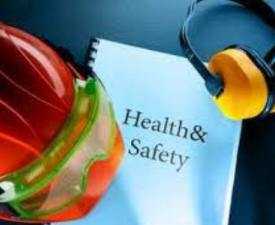Description
Course Name: Diploma in Occupational Safety, Health & Environment Management
Course Id: DOSH&EM/Q1001.
Education Qualification: 12th Pass.
Course Duration: 370 Hrs (Equivalent to One Year).
Total Credits: 18.
How You will Get Diploma Certificate:
Step 1- Select your Course for Certification.
Step 2- Click on Enroll Now.
Step 3- Proceed to Enroll Now.
Step 4- Fill Your Billing Details and Proceed to Pay.
Step 5- You Will be Redirected to Payment Gateway, Pay Course and Exam Fee by Following Options.
Card(Debit/Credit), Wallet, Paytm, Net banking, UPI and Google pay.
Step 6- After Payment You will get Study Material Login id and Password on your email id.
Step 7- After Completion of Course Study give Online Examination.
Step 8- After Online Examination you will get Diploma Certificate soft copy(Scan Copy) and Hard Copy(Original With Seal and Sign).
Step 9- After Certification you will receive Prospect Job Opportunities as per your Interest Area.
Online Examination Detail:
- Duration- 120 minutes.
- No. of Questions- 60. (Multiple Choice Questions).
- 10 Questions from each module, each carry 10 marks.
- Maximum Marks- 600, Passing Marks- 40%.
- There is no negative marking in this module.
| How Students will be Graded: | ||
| S.No. | Marks | Grade |
| 1 | 91-100 | O (Outstanding) |
| 2 | 81-90 | A+ (Excellent) |
| 3 | 71-80 | A (Very Good) |
| 4 | 61-70 | B (Good) |
| 5 | 51-60 | C (Average) |
| 6 | 41-50 | P (Pass) |
| 7 | 0-40 | F (Fail) |
Benefits of Certification:
- Government Authorized Assessment Agency Certification.
- Certificate Valid for Lifetime.
- Lifetime Verification of Certificate.
- Free Job Assistance as per your Interest Area.
Syllabus
Management for Health & Safety: Basic health & safety, health and safety, we believe, clapham junction accident, kinds of accident, safety management, safety policy, biohazards, chemicals, action to take prevent fire, radiation.
Workplace Safety Management: Objectives, role of standards, regulatory standards in India, factories act1948, non mandatory standards on OSH for work place safety, electrical safety, fire safety, personal protection, eye & face protectors.
Environmental Management: Introduction, Goals constraints in HSE management, presentation of the state of the art, problem areas, the environment (protection) act,1986 (amended 1991), Osh law relating to substance, machinery &environment, occupational safety and health skills development, research development.
Fire Safety & Risk Management: Objectives, key principles of health and safety, personal protective equipment, major elements of an effective safety and health program, hazard prevention and control, safety and health training, asbestos hazards emergency response act.
Occupational Hygiene: Occupational hazards and risks: the problem and the ILO response, key principles in occupational safety and health, general framework for occupational safety and health, national policy on occupational safety and health, occupational safety and health policy within the enterprise, occupational health services.
Management of Health & Wellness at Work: Development safety & health movement, department of occupational safety and health (DOSH), safety and health, potential safety hazards in oil and gas operation, potential safety hazards in oil and gas operation, personal protective equipment, importance of safety, hazard prevention and control.


Reviews
There are no reviews yet.